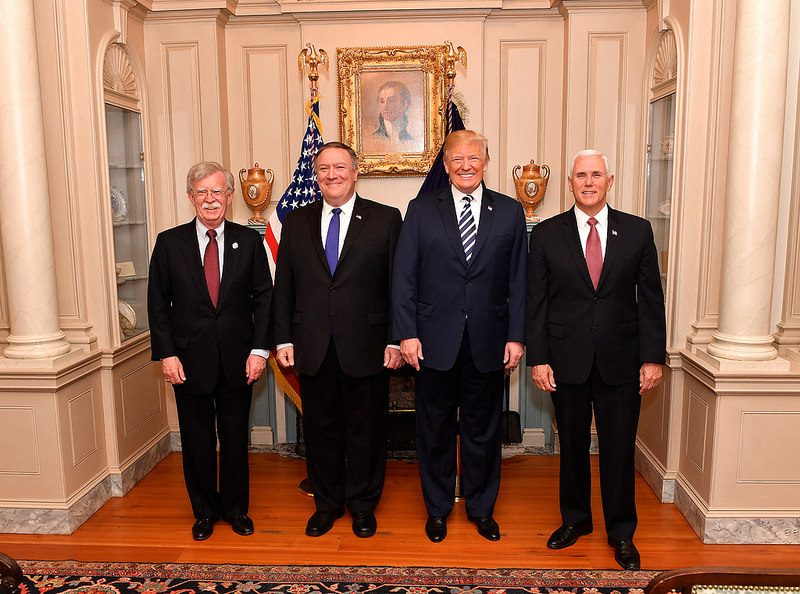
A flip of the coin has long been an unbiased way of settling a dispute or deciding a random verdict. Calling it in the air often decides friendly disputes, who’s home or away, and in some cases life or death. Just ask Tommy Allsup about his infamous coin toss with Ritchie Valens, a toss that sealed Valens’ fate in “The Day the Music Died.”
Now what if you were told the U.S. missile defense system—with a cost approaching hundreds of billions of dollars— had the same odds in protecting you from North Korean ICBM’s as Valens’ coin toss? Trey Obering, a former head of the missile defense agency, when talking about the chances of defending the U.S. mainland from an ICBM, says “It’s at least as good as a coin toss.”
As North Korea rapidly tests and develops intercontinental ballistic missiles and tensions continue to rise, we could one day find ourselves asking, heads or tails? Joe Cirincione of DefenseOne.com writes, “It’s time national leaders speak realistically about missile defense.”
The number one reason we don’t shoot down North Korea’s missiles is that we cannot.
Officials like to reassure their publics about our defense to these missiles. Japanese Chief Cabinet Secretary Yoshihide Suga told his nation after last week’s test, “We didn’t intercept it because no damage to Japanese territory was expected.”
That is half true. The missile did not pose a serious threat. It flew over the Japanese island of Hokkaido, landing 3700 km (2300 miles) from its launch point near North Korea’s capital of Pyongyang.
The key word here is “over.” Like way over. Like 770 kilometers (475 miles) over Japan at the apogee of its flight path. Neither Japan nor the United States could have intercepted the missile. None of the theater ballistic missile defense weapons in existence can reach that high. It is hundreds of kilometers too high for the Aegis interceptors deployed on Navy ships off Japan. Even higher for the THAAD systems in South Korea and Guam. Way too high for the Patriot systems in Japan, which engage largely within the atmosphere.
All of these are basically designed to hit a missile in the post-mid-course or terminal phase, when it is on its way down, coming more or less straight at the defending system. Patriot is meant to protect relatively small areas such as ports or air bases; THAAD defends a larger area; the advanced Aegis system theoretically could defend thousands of square kilometers.
But could we intercept before the missile climbed that high? There is almost no chance of hitting a North Korean missile on its way up unless an Aegis ship was deployed very close to the launch point, perhaps in North Korean waters. Even then, it would have to chase the missile, a race it is unlikely to win. In the only one or two minutes of warning time any system would have, the probability of a successful engagement drops close to zero.
What about our long-range defenses, the Ground-Based Midcourse Defense, or GMD, interceptors based in Alaska and California? There the test record is even worse. Even under ideal conditions, where the defenders knew the time, direction and trajectory of the test target and all the details of its shape, temperature, etc., this system has only hit its target half of the time.
“It’s actually virtually impossible to shoot down a missile on the way up,” adds Gerry Doyle, deputy business editor for Asia at The New York Times. “Midcourse or terminal are the only places you have a shot.” That would mean for a test missile shot towards Guam, THAAD would have a chance to engage, though it has only been tested once against a missile of this range. For the test flights over Japan that would mean the only engagements possible are to the east of Japan, when the missile was on its way down. But there is little reason and huge logistical difficulties in having U.S. Aegis destroyers and cruisers loiter in the ocean there, waiting for a possible test launch.
Trying to use missiles from Aegis ships “would be a highly demanding task and entail a significant amount of guesswork, as the ships would have to be in the right place at the right time to stop a test at sea,” explains Kingston Reif of the Arms Control Association. And that is if the systems worked as advertised. None of the theater systems have been tested under the stressful conditions of a real-world exchange. THAAD, Patriot and especially Aegis, have done fairly well in tests, but these have been tests designed for success, simplified, carefully staged and using mostly short-range targets. Aegis has only been tested once against an intermediate-range target says Reif, one of the leading experts on U.S. missile defense programs. […]
“The success rate of the GMD systems in flight intercept tests has been dismal,” says former director of operational testing for the Pentagon, Philip Coyle. Our chances of intercepting a threat missile, even under ideal conditions, are basically “at least as good as a coin toss,” says the former head of the Missile Defense Agency, retired Lt. Gen. Trey Obering.
Yet, reporters routinely use words like “shield” and “dome” to describe our supposed capability, giving us a false sense of security. Officials make the matter worse with exaggerated, if carefully constructed, claims. “The United States military can defend against a limited North Korea attack on Seoul, Japan and the United States,” said Chairman of the Joint Chiefs, General Joseph Dunford at the annual Aspen Security Forum in July.
Is this true? It depends what you mean by the word “limited.” […]
Our anti-missile systems have never been realistically tested against any of these simple countermeasures. This is one reason that the Pentagon’s current director of operational testing is much more cautious in his assessments than missile defense program officials. “GMD has demonstrated a limited capability to defend the U.S. Homeland from small numbers of simple intermediate-range or intercontinental ballistic missile threats launched from North Korea or Iran,” he reports. Moreover, it is impossible, he says, to “quantitatively assess GMD performance due to lack of ground tests” and “the reliability and availability of the operational GBI’s [Ground-Based Interceptors] is low, and the MDA continues to discover new failure modes during testing.” […]
Source: DefenseOne







